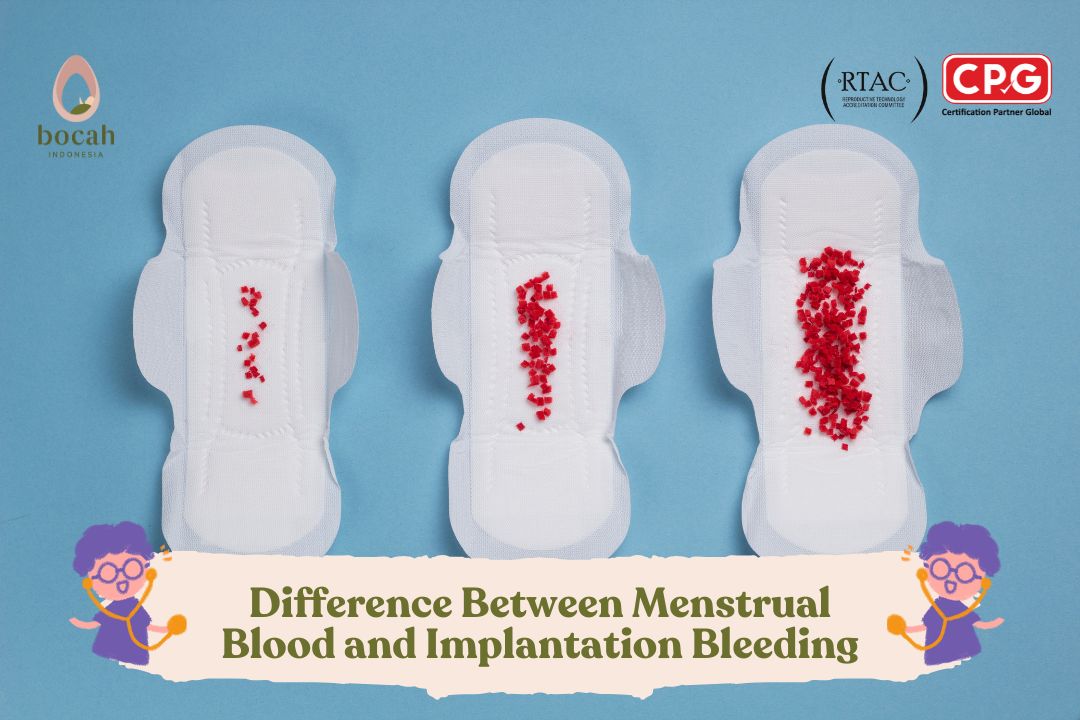Postpartum Hemorrhage: When Post-Delivery Bleeding Doesn’t Stop

Postpartum hemorrhage is severe vaginal bleeding after giving birth. It is a serious condition that can lead to death. Postpartum hemorrhage (PPH) is the heavy bleeding experienced by women after childbirth. This type of bleeding occurs in about 1 to 5 out of 100 women who give birth. Although rare, this condition is considered serious because it can be life-threatening.
Based on the timing of occurrence, there are two types of PPH: primary PPH, which happens within 24 hours after childbirth, and secondary PPH, which occurs between 24 hours and 12 weeks after childbirth. Generally, early detection and prompt treatment of PPH lead to a better prognosis.
Criteria for postpartum hemorrhage
A certain amount of blood loss during childbirth is normal. In the past, women were considered to have PPH if they lost more than 500 mL of blood during vaginal delivery or more than 1,000 mL during a Cesarean section.
However, in 2017, the American College of Obstetrics and Gynecology updated the definition of PPH to be cumulative blood loss exceeding 1,000 mL or blood loss accompanied by signs and symptoms of hypovolemia within 24 hours after the delivery, regardless of the delivery method.
With such blood loss, PPH can trigger a sudden drop in blood pressure, leading to shock and death. Shock occurs when the body’s organs do not receive enough blood flow.
Tanya Mincah tentang Promil?
Why does postpartum bleeding occur?
There are several reasons why PPH may occur. The placenta or afterbirth attaches to the uterine wall and provides nutrients and oxygen to the baby during pregnancy. After the baby is born, the uterus continues to contract to expel the placenta. This process occurs during the third stage of labor. These uterine contractions also help to compress the blood vessels where the placenta was attached to the uterine wall. Sometimes, these contractions are not strong enough to stop the bleeding. This condition is called uterine atony, which is the most common cause of PPH, accounting for 80% of cases.
PPH can also occur when a part of the placenta remains attached to the uterine wall or when some reproductive organs are damaged during delivery. The risk of PPH is also increased if a woman has blood clotting disorders or certain health conditions.
Postpartum Hemorrhage Symptoms:
Postpartum bleeding is suspected if the following symptoms or signs are present:
- Heavy bleeding from the vagina that doesn’t stop.
- Signs of low blood pressure leading to shock, such as blurred vision, shivering, cold sweats, rapid heartbeat, feeling confused, dizzy, lightheaded, drowsy, weak, or on the verge of fainting.
- Nausea or vomiting.
- Pale skin.
- Swelling and pain around the vagina or perineum (the area between the vagina and anus).
- Ringing in the ears.
Causes of Postpartum Hemorrhage:
The main causes of PPH are abbreviated as the “4Ts,” which are tone, trauma, tissue, and thrombin.
1. Tone or Tonus:
This is closely related to uterine atony, a condition in which the uterus is soft and weak after childbirth. It occurs when the uterine muscles fail to contract strongly after delivery. Postpartum uterine contractions help to stop bleeding at the site where the placenta was attached to the uterine wall. Uterine atony can occur when the uterus is stretched or enlarged (distended) due to giving birth to twins or having a large baby (weighing 4 kg or more). It can also occur in women who have given birth multiple times, experienced prolonged labor, or have excessive amniotic fluid (polyhydramnios).
2. Trauma or Injury:
Injury to the vagina, cervix, uterus, or perineum can cause bleeding. The use of instruments such as forceps or vacuum during delivery can increase the risk of uterine trauma. Sometimes, hematomas (accumulation of blood outside blood vessels) can form in hidden areas and lead to bleeding that occurs hours or days after childbirth.
3. Tissue:
Bleeding can occur when placental tissue is retained or some parts of it remain attached to the uterine wall. This usually happens due to placental abnormalities that affect the uterus’s ability to contract after delivery.
4. Thrombin or Blood Clotting Factors:
Factors that affect blood clotting, such as preeclampsia/eclampsia or other blood clotting disorders, can interfere with the body’s ability to control bleeding. This condition can even make small bleeding difficult to control.
In addition to these four factors, women are also at higher risk of PPH if there is a history of a similar condition in a previous pregnancy. Women of Asian and Hispanic descent are also more likely to experience PPH.
Diagnosis of Postpartum Hemorrhage:
Doctors diagnose PPH through physical and visual examinations, blood tests, and in-depth medical interviews. PPH can be detected based on the amount of blood lost during childbirth. The amount of blood lost is measured by weighing pads or sponges soaked in blood from the beginning of delivery.
Other methods for diagnosing PPH include:
- Close monitoring of pulse rate and blood pressure.
- Blood tests to measure red blood cell concentration (hematocrit) and blood clotting factors.
- Ultrasound (USG) to get detailed images of the uterus, placenta, and other organs.
Treating Postpartum Hemorrhage:
Postpartum bleeding is considered a medical emergency. The source of bleeding must be stopped as soon as possible, and lost blood should be replaced.
Treatment for the source of bleeding may include:
- Manual uterine massage by hand. The doctor will massage the uterus to help it contract, reduce bleeding, and assist the body in expelling blood clots.
- Administration of drugs like oxytocin to induce uterine contractions and reduce bleeding.
- Removal of retained placental tissue from the uterus, packing the uterus with special gauze, balloon, or sponges, or using medical instruments or sutures to help stop bleeding.
- Repairing tears in the vagina, cervix, or uterus.
- Embolization of blood vessels supplying the uterus. In this procedure, the doctor performs a special test to locate the source of bleeding blood vessels and injects a special substance into those blood vessels to stop bleeding. This procedure is done in specific cases and can prevent a woman from undergoing a hysterectomy (removal of the uterus).
As for controlling bleeding and replacing lost blood, doctors generally administer intravenous fluids, blood transfusions, or oral iron supplements along with prenatal vitamins.
In rare cases or if other methods fail, the doctor may recommend laparotomy or hysterectomy. Laparotomy is a surgery with an incision in the abdomen to find the source of bleeding. Hysterectomy is the surgical removal of the uterus. This procedure is usually only performed when other methods are unsuccessful.
Complications of Postpartum Hemorrhage:
Excessive blood loss can lead to complications such as increased heart rate, rapid breathing, and decreased blood flow. All of these combinations will reduce blood flow to vital organs such as the liver, brain, heart, and kidneys, resulting in shock.
In some cases, Sheehan’s syndrome may occur, a condition where the pituitary gland in the brain fails to produce hormones. The pituitary gland produces important hormones that control various body functions.
Conclusion:
Pregnant women need to be aware of the risk factors for PPH or postpartum bleeding. Additionally, ensure that emergency care is available during childbirth. Essentially, early recognition and management of PPH can reduce the amount of blood loss and minimize the chances of complications.
Ask Mincah
[fluentform id=”31″]source:
- American College of Obstetricians and Gynecologists. ACOG Practice Bulletin Number 183, October 2017: Postpartum hemorrhage. Obstet Gynecol 2017; 130:e168.
- Cleveland Clinic. [Last reviewed 3 Jan 2022]. Postpartum hemorrhage. URL: https://my.clevelandclinic.org/health/diseases/22228-postpartum-hemorrhage.
- Mayo Clinic. [Last reviewed 21 Jun 2022]. Postpartum hemorrhage, risks and current management. URL: https://www.mayoclinic.org/medical-professionals/obstetrics-gynecology/news/postpartum-hemorrhage-risks-and-current-management/mac-20533920.
- March of Dimes. [Last reviewed Mar 2020]. Postpartum hemorrhage. URL: https://www.marchofdimes.org/find-support/topics/postpartum/postpartum-hemorrhage
- Wormer KC, Jamil RT, Bryant SB. Acute Postpartum Hemorrhage. [Updated 2023 May 8]. In: StatPearls [Internet]. Treasure Island (FL): StatPearls Publishing; 2023 Jan-. URL: https://www.ncbi.nlm.nih.gov/books/NBK499988/




